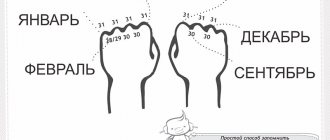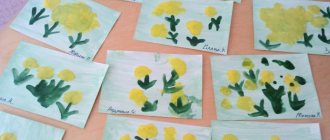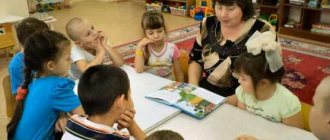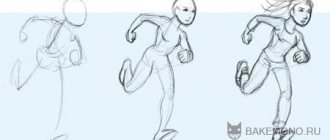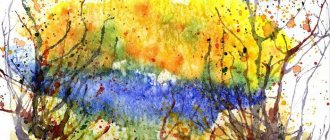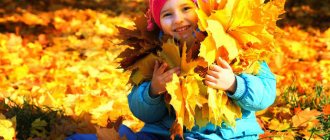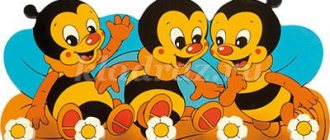Application area
Decorative stickers for kindergarten are made from environmentally friendly vinyl, which is resistant to various influences and has aesthetic appeal.
The bottom layer has a self-adhesive base, which allows you to fix the decorative element quickly and efficiently. The sticker can be applied to a wall with paint and wallpaper. Stickers can be used to decorate not only walls, but also other flat surfaces, for example, for marking children's lockers. In a large assortment you can find bright and colorful drawings with your favorite cartoon characters, animals, insects, dolls, cars, etc.
Pictures for cabinets with soft toys - Everything for kindergarten
30 bright and colorful pictures for lockers for a kindergarten group.
All files are made in high quality with a resolution of more than 800 pixels in width. This aspect allows you to print pictures even entirely one at a time on one A4 sheet.
In the printer's print settings, you can select 2 or 4 images per sheet.
Especially for the convenience of printing, when there is no need for huge cards and cabinets are decorated with small pictures, we have prepared 4 A4 sheets with 9 cards glued together. After printing, you just need to cut them out with scissors:
Collection 1 Collection 2 Collection 3 Collection 4
All 30 pictures are published below in good quality:
detskiy-sad.com
What do you need to know about SanPiN in preschool institutions?
Sanitary and hygienic rules and regulations for preschool institutions are approved by SanPiN 2.4.1.3049-13.
The act, approved by the Decree of the Chief Sanitary Doctor of the Russian Federation dated May 15, 2013 No. 26, includes rules governing the organization of the organization and the rules for the use of accessories for children accepted into groups.
The act establishes requirements for:
- location of the preschool educational institution;
- equipment, including its location;
- maintenance of territories related to a children's educational institution;
- maintenance, decoration of premises, the building itself;
- lighting of rooms, as well as auxiliary premises (natural and artificial);
- heating, water supply, ventilation, sewerage and other systems;
- the formation of groups that accept children with diseases that limit their health;
- admission of minors to organizations implementing preschool education programs;
- organization of the regime and educational process, including training;
- equipment, inventory, toys, dishes and equipment in the catering department;
- conditions of preparation, storage of food, menu preparation;
- transportation, food intake;
- hygienic, anti-epidemic measures;
- compliance with sanitary standards.
All of the above requirements must be strictly observed by employees of preschool institutions.
For refusal to comply with the rules, citizens and organizations face a hefty fine. Next we will talk about labeling furniture and utensils in preschool educational institutions.
How are chairs and tables marked in kindergarten according to SanPiN?
According to clause 6.6 of SanPiN, chairs and tables used by kindergarteners must comply with standards taking into account the physiological characteristics of children and be labeled in accordance with them.
The choice of furniture is carried out according to such parameters as the child’s height.
A standardized table is used for this:
| Group (height in centimeters) | Furniture group | Tabletop height (in centimeters) | Seat height (cm) | Marking furniture in kindergarten according to SanPiN |
| ≤85 | 00 | 34 | 18 | black |
| 85-100 | 0 | 40 | 22 | white |
| 100-115 | 1 | 46 | 26 | orange |
| 115-130 | 2 | 52 | 30 | violet |
| 130-145 | 3 | 58 | 34 | yellow |
| 145-160 | 4 | 64 | 38 | red |
Clause 6.7 of SanPiN establishes the requirements for the countertop. The latter has a matte surface of a light shade.
Color of furniture markings in kindergarten.
Furniture cladding must be resistant to detergents (disinfectants), moisture, and also have low thermal conductivity.
Sanpin for kindergartens. [274.00 KB]
Features of furniture used in preschool institutions
The main difference between children's furniture and adult furniture is its size. Tables and chairs must have the necessary functionality, but at the same time be comfortable for the child and correspond to his height and age.
It is important that when a child works at a table, the following requirements are met:
- your feet should be completely on the floor and not hanging in the air;
- the front edge of the chair should not be adjacent to the popliteal hollows;
- the back should touch the back of the chair in two places - the lower part of the shoulder blades and the lower back;
- Your elbows should rest comfortably on the tabletop at a 90-degree angle.
The listed rules will be observed only if the size of the furniture corresponds to the height of the child. The manufacturer must produce tables and chairs of certain sizes and mark them accordingly - this will help the kindergarten choose furniture suitable for children of a certain age category.
How do preschool educational institutions mark dishes according to SanPiN?
In addition to furniture in kindergartens, dishes must be marked. However, this procedure requires responsibility.
The main purpose of the event is to prevent the mixing of raw foods and cooked dishes.
If the established SanPiN order is not followed, then microbes will get into the baby’s food, causing a serious illness.
Markings must be present on all containers intended for the preparation, distribution, and storage of food in a preschool institution.
The marking is applied using a special stencil. Oil-based paint is used for marking.
The designations are individual for each type of dish, as well as the containers in which they are stored.
Rules for handling food products are regulated by sections 13, 14 of SanPiN 2.4.1.3049-13.
Meals for children are organized in groups in a specially designated room.
Food is delivered from the place of preparation to the place of eating in closed, labeled containers.
Is your kindergarten marked according to SanPin?Yes it is applied50%Partially applied40.63%No it is not applied9.38%Votes: 32
Marking boards and knives.
Knives and boards intended for cutting products are marked depending on the type of product:
| Marking | Products |
| CM | raw meat |
| SK | raw chicken |
| SR | raw fish |
| CO | fresh vegetables |
| VM | boiled meat |
| VR | boiled fish |
| IN | vegetables after heat treatment |
| Gastronomy | gastronomy |
| Herring | herring |
| X | bakery products |
| Greenery | fresh herbs |
Thus, using a cutting board and knives for a specific type of product will not allow them to be used for cooking anything else.
Sometimes children's institutions install additional markings on equipment for cutting salads and preparing other dishes.
Labeling of dishes.
Placing marks on the dishes is also important. Use is carried out in strict accordance with the marked marks.
When preparing food, labels are used that correspond to the type of food, for example:
- first;
- second;
- third;
- milk products;
- cereal porridge;
- eggs, etc.
Storage is carried out in containers marked in the same way (sugar, butter, sour cream).
Labeling is also required for any container and device used by preschool employees when preparing food for children.
It is strictly prohibited to use unmarked utensils.
Ventilation schedule in kindergarten according to Sanpin.
Didactic games
Pictures on the topic of furniture for children are often used as visual material for educational games. Their range is varied. Such fun is aimed at the overall development and development of the child as a person.
- “What will this be needed for?” The child needs to correctly name the piece of furniture in the picture and describe its purpose (what they do with it in everyday life, where it can be placed).
- "Find the odd one out." A radically different image is specially added to one of the groups of pictures (by purpose, location, color, size). The child is given the task of determining what is superfluous.
- "Get things in order." In front of the child is a diagram of an apartment with different rooms and chaotically laid out pictures of furniture. The goal is to arrange the furniture in its place, as is customary in real life.
- "Part of an object." In all pictures, the furniture is shown without a certain element (the back of a chair, the armrest of a chair, the leg of a sofa, etc.). Children need to point to the missing part and name it.
- "What common". The task is to find common characteristics among different furniture (elements - legs, backs, etc., or color, shape, material).
- "Find the difference." Children need to find differences in pieces of furniture similar to the previous game.
- “What is this item?” It is required to describe certain furniture with various epithets. Give it a detailed description using adjectives. You can arrange a competition between subgroups of children. The team that comes up with the most characteristics wins.
- “Put it all together.” It is necessary to assemble a piece of furniture from puzzles, an entire furnished room. If there are two identical sets of puzzles, older children can compete in the speed of completing the task.
- "Shop". A child can make a conditional purchase of a headset only if he correctly pronounces the name of the furniture in the picture.
- "Repair". In all pictures, the furniture is shown without a certain element (back, legs, seat, armrest). Children need to name the missing part, what it can be made of and what tools are needed to repair it.
- "What is this". The child needs to recognize and name the furniture based on individual parts of the set.
- "Big small". Invite the children to compare the furniture in the two pictures and determine which is larger and which is smaller.
- “Name all the pieces of furniture.” The image contains chaotically placed furniture, dishes, plants, things, etc. Children find and name only furniture.
- “How this furniture is made.” The child should reproduce the sequence of actions when making an object. To do this, you need to prepare a manual diagram that shows: the material, the manufacturing process, tools and the furniture itself.
- "In our house". The task for kids is to list all the pieces of furniture that they have at home (by room).
If you prepare a variety of pictures of furniture for children, you can come up with any didactic fun on your own. Invent your own unique gaming method of teaching and developing children.
How to properly label clothes and shoes for kindergarten so that the inscriptions do not rub off?
- Use of pens and special markers . Now in stores you can buy special pens and markers for marking things. They stick to any surface and do not wear off for a long time. For hard surfaces (shoe soles, comb, study folder, etc.), a regular permanent marker for writing on CDs is also suitable. The disadvantage: you will have to buy different markers for different types of fabrics.
- Tags . There is also a huge selection of tags for children's clothing. They can be ready-made (with some kind of design, symbol, cartoon character), or made to your order, indicating your child’s details (name, surname, group number, mother’s phone number, any other information). Tags are sewn to clothes by hand or on a sewing machine, which, of course, takes a lot of time, but the tag can be cut off if you decide to sell the item or it goes to the child’s younger brother or sister. The material for making tags can be different: thin satin for linen and clothes of the first layer, and dense synthetic fabric for outerwear.
- Applications . There are regular sew-on and thermal appliques. A bright berry, flower, or car will quickly be remembered by the child and will remind him of his mother. You can glue the applique not from the wrong side, as in all other methods, but from the outside. A very cute way to decorate and mark clothes at the same time. The disadvantage is that only your baby will remember the conventional symbol, but it will not mean anything to the teachers, and in case of confusion, they will not be able to come to the rescue, especially if the baby still doesn’t speak well. In addition, appliqués are not cheap, and children have a lot of things that require labeling.
- Stickers or stickers. For the convenience of mothers, manufacturers have come up with an easy and quick way to make marks on clothes and things - stickers, iron-on adhesives and stickers.
- Stickers and iron-on adhesives are made from thermal transfer paper on which a specific design or inscription is printed. Their background is transparent. Stickers can be used to mark objects with a hard surface (stationery, combs, etc.), and thermal stickers are applied to clothing using an iron. They hold up very well, but can cause irritation for babies with sensitive skin. It is not recommended to stick them to underwear.
- Stickers are also glued to clothes with an iron, but they are made of polyester, and therefore their background is white or colored, but not transparent. Stickers can be used to mark not only clothes, but also shoes; they are very resistant to abrasion. In this case, they are glued to the insole and the child can always see whether he is wearing his own sandals.
- Labels on tape . Labels are a child's design or information printed on adhesive or fabric tape. You need to cut a piece of the required length and attach it to your clothes. Those. this could be a sticker as in the example above, or a fabric tag.
There are many ways to label things for the garden. Choose one that is convenient for you, or better yet, use different ones for different types of things. Then you won’t have to be sad about lost things, and your baby won’t be upset that the teacher unknowingly put his jacket or scarf on another child.
Preparing for kindergarten includes not only choosing the necessary things for the child, but also undergoing a medical examination and vaccinations. Find out from our materials about mandatory and additional vaccinations, as well as whether they can not be taken to kindergarten without a Mantoux test and how to write a refusal to receive vaccinations.
Why is labeling necessary?
Bright stickers on cabinets not only perform a decorative function, but also help create harmony in the interior. Children like beautifully decorated rooms and evoke positive emotions. The purpose of the pictures is as follows:
- creating a good fairy-tale atmosphere;
- attracting the child's attention to his own locker;
- an organic addition to the decor in the kindergarten;
- creating a themed interior;
- stimulation of a positive attitude.
When choosing labels for cabinets, it is recommended to give preference to pictures rather than numbers. The fact is that children just starting to go to kindergarten do not yet know numbers, so they will not be able to fully navigate their new environment. Stickers vary in color, design, size, theme, and technique of attachment to the surface of furniture. Any variety of designs is designed to attract the attention of kids, allowing them to find their own among the many storage compartments.
Types of pictures
Furniture for children should be practical, safe, and multifunctional. The main design requirement is a catchy, original appearance. The same recommendations apply to small cabinets that are used to store outerwear, accessories, and spare shoes. You can decorate the designs using personalized and themed stickers.
With the baby's name
The marking must be supplemented with a special column for entering the child’s first and last name. Such stickers are suitable only for the middle and senior groups, where children with basic reading skills go. If the decor is selected for children, it is important that it is complemented by small drawings. This will help you quickly remember where the right locker is.
Personalized decor with the child’s last name is the most convenient option for parents.
Thematic
A variety of designs are used to decorate cabinets in kindergartens. Kids will very quickly remember cute, kind pictures. Several topics are the most popular:
- Heroes of fairy tales and cartoons, for example, a fox, Leopold the cat, a lion cub, a gnome and others.
- Animals: bunnies, cockerels, deer, dogs, cats.
- Vehicles: cars, airplanes, tractors, boats, rockets.
- Vegetables and fruits: tomatoes, pumpkins, cherries, apples.
- Flowers and plants: cornflowers, roses, birches, daisies, Christmas trees.
Images of cartoon characters and animals should be positive and kind. Aggression is unacceptable because it can upset the baby or cause fear. Forest and domestic animals bring magical, fairy-tale notes to the atmosphere.
By using a combination of different images belonging to the same theme, it is possible to create a harmonious interior of the room. The locker room in the kindergarten will turn out to be attractive and interesting. Thanks to bright drawings, children develop creative abilities, correct perception of colors, and develop artistic taste.
Types of children's cabinet furniture, criteria for its selection
Pictures of furniture
At the moment of visual acquaintance with such material, children learn to recognize pieces of furniture. Pronounce their names accurately. Additionally, they gain skills in comparing quantities and proportions.
Pictures on the topic of furniture for children of senior preschool age are motivating material for the development of artistic taste. They help you learn to think figuratively, describing interior items in detail.
How to choose depending on the child’s age
Cabinets for kindergartens are coated with varnish or an even layer of paint. Thanks to this solution, children will not quarrel over the colors of the furniture. Each compartment for things belongs to one child, so special stickers are used for identification, which are selected taking into account age characteristics:
- Nursery group. Kids who do not yet know numbers and cannot read can perfectly distinguish and remember animals and fairy-tale characters. Bright stickers will help the baby distinguish his own closet from others.
- Middle group. The simplest geometric figures are suitable: triangles, circles, squares, stars. A sign for parents is placed inside the locker room with signs for each child.
- Senior group. Numbers can be used to design lockers. You should first make sure that all children know the numbers and there will be no confusion.
Experts do not recommend choosing inscriptions and letters for marking. Not all kindergarten-aged children will be able to read what is written. If such a sticker is used, it must be supplemented with a small picture.
What materials are they made from?
Children's labels are made from a variety of materials. A mandatory requirement is complete safety for the growing organism. The content of toxins, radioactive substances and other dangerous elements that may be present in the stickers is unacceptable. Reliable manufacturers monitor the environmental friendliness of their products. The most popular options are:
- Paper. Decor made from this material allows you to label cabinets. The products are easily attached to the surface of the furniture, resulting in an attractive flat-shaped picture.
- Chipboard, plywood. Original markings can be cut out of sheet materials, then painted with bright colors. The products have an unusual appearance, protruding slightly above the surface of the door.
Chipboard
Paper
The picture for a kindergarten cabinet should not be made of glass or plastic. The first one will break if handled carelessly, the second one may contain toxic substances.
Mounting methods vary depending on the material from which the children's decor is made. Paper stickers stick the fastest. It is enough just to remove the protective layer from the adhesive side and apply it to the surface of the cabinet.
Models made of plywood or chipboard are fixed to furniture using special tools. You will need self-tapping screws, as well as a screwdriver or screwdriver. After installation, decorative plugs are installed on the screw heads, which ensure safety of use and aesthetic appeal of the cabinets.
Children are pleased to visit educational institutions when cheerful pictures, smiling animals or funny fairy-tale characters greet them at the door. Thanks to charming, cute images, a friendly, warm atmosphere is created that has a beneficial effect on the child’s condition and mood. To create a holistic interior, it is necessary to select decor that matches the color scheme and design of the room.
Pictures of cabinets, what they are and mounting options
Bright and colorful pictures on the lockers will help your child recognize his locker and easily find it. Also, interesting illustrations will attract kids and will help them quickly memorize the names of various fruits, vegetables, animals, and letters.
Purpose
In the kindergarten there are special cubicles for storing children's things. Each child is assigned one locker. To prevent children from getting confused, they came up with the idea of attaching different pictures to the booths. This way, kids remember their illustration and easily find the right booth.
Pictures for cabinets using photographs have become widespread recently. An excellent choice if the child does not remember his own locker. He can easily find himself in the photo and thereby identify the desired booth.
Illustrations of letters glued to the booths help children quickly learn the alphabet. Pictures with letters on a bright background will appeal to kids no less and will attract attention. For example, sometimes they use the same shape for all booths. For example, the sun or a cloud are perfect for this. The best option is to use thematic templates depending on the name of the kindergarten or group. For a group called Sun or Bee, the best option is pictures with their image.
In addition, they often use pictures on booths with names. This option is ideal not only for children, but also for parents. Educators will also find personalized pictures convenient; they will not have to look for one or another booth if necessary.
Kinds
For many years in a row, in kindergartens, different images have been attached to storage cubicles. To prevent children from getting confused, the images are repeated on towel racks and cribs. The pictures on the cabinets are completely different. They are divided depending on the material of manufacture, shape, theme.
Material of manufacture
Popular materials for making templates for booths include: cardboard, paper. These can be pictures and photographs printed on plain or colored paper. Use special templates made of self-adhesive paper.
It is possible to make templates from plastic, wood, chipboard or glass. Plastic pictures will last a long time. Wooden templates are not only durable, but also environmentally friendly. Glass ones look very beautiful, but due to their fragility, they are not recommended for use in kindergartens. Children can accidentally break glass and get hurt.
Paper
Wooden
Plastic
Form
The form of illustrations can be completely different. Templates are often used in the form:
- geometric shapes;
- fruits, vegetables;
- colors;
- other items.
The most common geometric shapes are round and rectangular. In addition, images come in the shape of a diamond, square, or oval. Templates of berries and various fruits, such as apples and pears, look beautiful. These can be illustrations in the shape of a daisy, rose, cloud, house, ball, or other objects.
Personalized
Geometric figures
Alphabet letters
Cartoon characters

